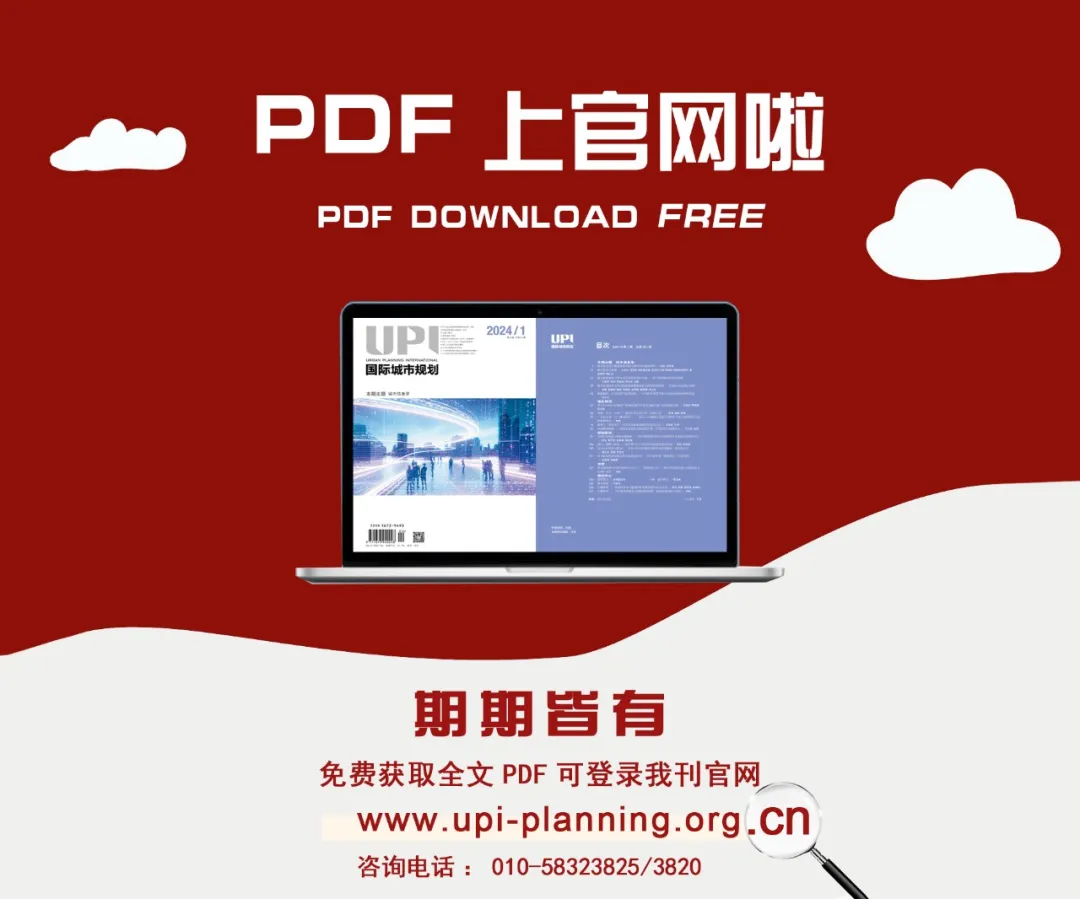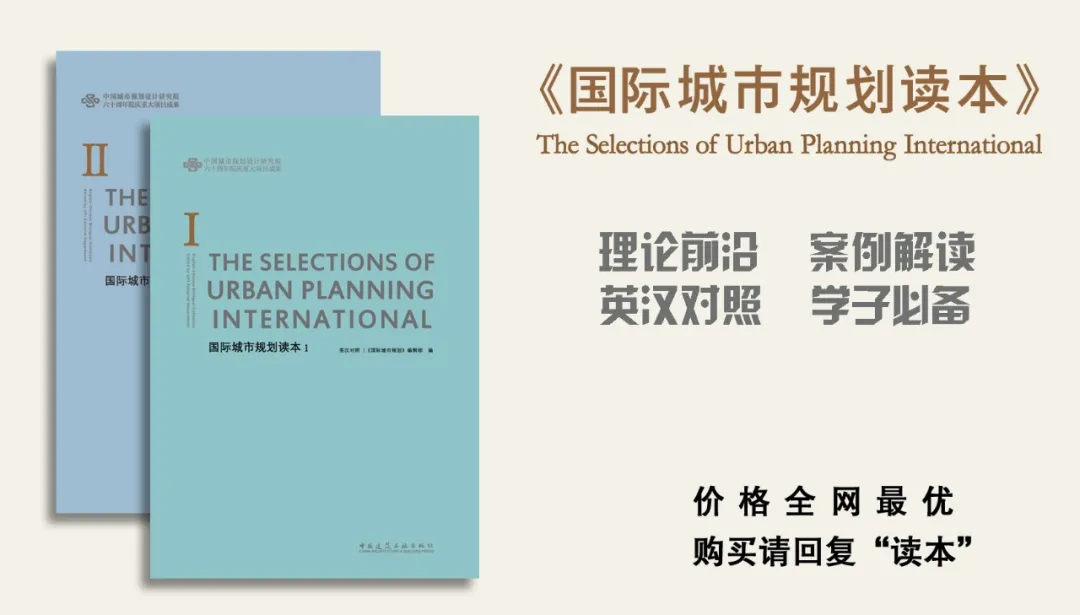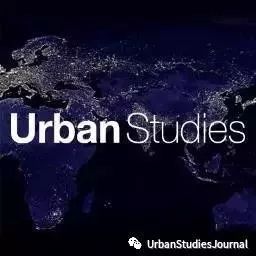为了更好地传播知识,推动期刊国际合作,本刊与《城市研究》(Urban Studies)杂志达成网络合作,不定期推送友刊的精选文章摘要。读者们可以借此了解国际城市研究的新动向,同时学习城市研究领域学术英文的正规表达。欢迎大家批评指正。
Application of the VBN theory to understand residents’ participation in the smart city: The case of French metropolises
应用VBN理论理解智慧城市中的居民参与——法国大都市的案例
Norbert Lebrument(法国克莱蒙奥弗涅大学)
Cédrine Zumbo-Lebrument(法国克莱蒙商学院)
Corinne Rochette(法国克莱蒙奥弗涅大学)
Abstract: Cities, where 60% of the world’s population lives, are particularly vulnerable to global warming. The environmental aspect is therefore an important dimension of sustainable smart cities, as is citizen participation. Based on the Value-Belief-Norm (VBN) theory, we explore the idea that citizen participation in the smart city is largely conditioned by the environmental consequences and responsibilities they attribute to their behaviour. A survey was conducted among 1670 residents of six major French cities involved in a smart city approach. Based on a model test using the PLS-PM approach, the results, confirm the validity of VBN theory in the French smart city context. More specifically, pro-environmental personal norms positively influence residents’ intention to participate in the smart city. Biosphericand altruistic values promote an ecological vision of the world, which strengthens awareness of environmental consequences and a sense of responsibility, which in turn activates pro-environmental personal norms. In this way, we demonstrate the relevance of mobilisingthe VBN theory to understand citizen participation in the smart city. Citizen participation in the smart city is ultimately a pro-environmental behaviour in itself. We make suggestions on how to develop citizen participation by strengthening environmental awareness and responsibility.
摘要:城市是全球60%人口的居住地,特别容易受到全球变暖的影响。因此,环境因素和公民参与都是可持续智慧城市的重要维度。基于价值—信念—规范(VBN)理论,我们探讨了这样一种观点,即公民参与智慧城市在很大程度上取决于其将哪些环境后果和责任归于自身的行为。我们对法国1670名居民进行了调查,这些居民来自参与了智慧城市建设的6个主要城市。使用PLS-PM方法的模型测试得出的结果证实了VBN理论在法国智慧城市环境中的有效性。更具体地说,亲环境的个人规范对居民参与智慧城市的意愿有积极影响。生物圈价值观和利他主义价值观促进了生态世界观,增强了对环境后果的认识和责任感,进而激活了亲环境的个人规范。通过这种方式,我们证明了运用VBN理论来了解公民参与智慧城市的相关性。公民参与智慧城市本身就是一种有利于环境的行为。我们就如何通过增强环境意识和责任感来促进公民参与提出了建议。
Keywords: citizen participation, smart city, sustainable city, Value-Belief-Norm theory
关键词:公民参与、智慧城市、可持续城市、价值—信念—规范理论
原文地址:https://doi.org/10.1177/00420980241269808
(In-)formal settlement to whom? Archaeology and old urban agendas for sustainability transitions in Ethiopia
对谁而言的(非)正规住区?考古学与埃塞俄比亚可持续性转型的历史城市议程
Christian Isendahl(瑞典哥德堡大学)
Abstract: African urban populations are growing predominantly through types of settlement commonly referred to as ‘informal’– settlements constructed outside the control of city or state governments. For the UN New Urban Agenda, informal settlement presents a challenge to developing sustainable cities. Settlement qualification in urban development discourse often relies on prescriptive formal models and considers anything not complying to these as ‘informal’ and unsustainable. This paper advances informal settlement as an adaptive response to Western planning models that builds on regional histories of organising urban space. Examining archaeological and historical urban records from northern Ethiopia, we define spatial patterns and social processes of urban transition over millennia. In the analysis, settlements that in current urban debates fall under the ‘informal’ rubric contribute to building urban resilience. A century-scale resolution reveals contingent conditions for cities enduring climatic and socio-political shifts during the Pre-Aksumiteand Aksumite periods (c. 800 BCE–CE 900) and afterwards. Past urban transitions were marked by inverse settlement dynamics: as urban cores shrank, peri-urban settlement grew and new centres were established. Although spatial reconfigurations followed political shifts, urban settlement remained largely consistent: urban landscapes of food production, material processing, resource trading and ritual making. In the Aksumite record, informal processes convey flexibility and diversity of settlement forms to undergo sustainability transitions. The durability of urban morphologies in the archaeological record warrants against stereotyping informal settlement as a challenge to sustainability transitions. A long-term perspective supports emerging approaches to informal settlement today as a locally adaptive property of urban systems.
摘要:非洲城市人口的增长主要是在那些通常被称为“非正规”住区的地方,即不受城市或国家政府控制的住区。从联合国《新城市议程》的观点来看,非正规住区对可持续城市的发展提出了挑战。在城市发展话语中,住区是否合格通常依赖于预先给定的正规模型,并将任何不符合这些模型的事物视为“非正规的”和不可持续的。本文提出非正规住区是针对西方规划模式的一种适应性反应,建立在组织城市空间的区域性历史基础之上。通过考察埃塞俄比亚北部的考古和历史城市记录,我们明确了数千年来城市变迁的空间模式和社会进程。分析显示,在当前关于城市的讨论中,属于“非正规”范畴的住区有助于增强城市韧性。我们的分析精确到以百年为单位的时间尺度,揭示了前阿克苏姆时期和阿克苏姆时期(公元前800年—公元900年)及之后城市经历气候和社会政治变迁的偶发条件。过去的城市转型特点是逆向的定居动态:随着城市核心区的收缩,城市周边的住区不断增长,新的中心区不断建立。尽管空间重构随着政治变化而发生,城市住区仍然基本保持一致,反映为食品生产、材料加工、资源交易和仪式举行的城市景观。在阿克苏姆人的记录中,非正规进程传达了可持续发展转型过程中定居形式的灵活性和多样性。考古记录中城市形态的持久性表明非正规住区不应被认定为可持续发展转型的挑战。从长远角度看,当今的非正规住区应当被使用一种新兴的方法来理解,成为城市系统的一种局部适应性特性。
Keywords: Aksum, archaeology, Ethiopia, informal settlements, urban sustainability transitions
关键词:阿克苏姆、考古学、埃塞俄比亚、非正规住区、城市可持续发展转型
原文地址:https://doi.org/10.1177/00420980241272047

Common property in the city: Curbing urban vacancy in São Paulo
Abigail Friendly(荷兰乌德勒支大学)
Abstract: The issue of urban vacancy is both a complex and a prevalent phenomenon in multiple contexts globally, providing an opening to address systemic issues of precarity. In this article, I explore the issue of urban vacancy in São Paulo, where the problem of vacant property has been highlighted for years alongside housing challenges and socio-spatial segregation. While São Paulo’s real estate market is often unreachable for the urban poor, a Brazilian constitutional directive on the social function of property – the obligation to use property to further the common good – enables municipalities to take punitive action against owners of vacant property through a triad of policy tools. Therefore, despite the often-exclusionary nature of vacancy, transformational possibilities may exist. Exploring the application of these tools, I view urban vacancy through a perspective on common property, untangling emergent contestationsand opportunities for transformation.
摘要:城市空置问题是一个复杂且普遍存在的现象,在全球多种环境下存在,也因此为解决系统性不稳定问题提供了契机。本文探讨了圣保罗的城市空置问题。多年来,圣保罗的房产空置问题与住房挑战和社会空间隔离问题一直备受关注。虽然圣保罗的房地产市场往往是城市贫民无法企及的,但《巴西宪法》中关于房地产的社会功能(利用房地产促进公共利益的义务)的指令使市政当局能够通过三重政策工具对空置房产的业主采取惩戒措施。因此,尽管空置往往具有排他性本质,但转变的可能性仍然存在。通过探索对这些工具的应用,本文从公共财产的视角考察城市空置,探索新出现的争议和转变的机会。
Keywords: Brazil, urban vacancy, transformations, urban policy, precarity, housing
关键词:巴西、城市空置、转变、城市政策、不稳定、住房
原文地址:https://doi.org/10.1177/00420980241271063

Child-friendly urban practices as emergent place-based neoliberalsubjectivation?
儿童友好型城市实践——一种新兴的基于场所的新自由主义主体化?
Carmen Perez-Del-Pulgar(德国亥姆霍兹环境研究中心;西班牙巴塞罗那城市环境正义与可持续发展实验室)
Isabelle Anguelovski(西班牙环境科学与技术研究所;西班牙巴塞罗那自治大学;巴塞罗那城市环境正义与可持续发展实验室;加泰罗尼亚高等研究院)
James JT Connolly(加拿大不列颠哥伦比亚大学;西班牙巴塞罗那城市环境正义与可持续发展实验室)
Abstract: As city-level decisionmakers generate urban policies and spatial interventions aimed at enhancing children’s environments and increasing their health, wellbeing and participation in urban life, they also impact the types of citizens that cities produce. Yet, despite the increasing ubiquity of city plans targeting the creation of child-friendly environments, child-centred transformations within the urban built fabric have not been a major analytical theme compared to other economic, spatial and welfare aspects of city restructuring in the context of neoliberal urbanisation. In light of this need for greater empirical and theoretical exploration of child-centred urbanism, we compare and contrast how plans reorganise children’s urban social space across different neoliberalising contexts. Drawing on empirical research conducted in Amsterdam, Vienna and Bristol in 2019, including 46 semi-structured interviews with key stakeholders involved in child-friendly planning, we contribute to the understanding of how place-based subjectivation processes operate within these plans. We argue that child-friendly urban plans are instrumental in the process of creating subjects that have internalised the norms of neoliberal urbanisation.
摘要:当城市决策者制定城市政策和空间干预措施旨在改善儿童环境并提高其健康、福祉和对城市生活的参与度,这些政策和措施也会影响城市培养的公民类型。尽管以创造儿童友好型环境为目标的城市规划越来越普遍,但与新自由主义城市化背景下的其他经济、空间和福利方面的城市重构相比,城市建成环境中以儿童为中心的变革尚未成为主要的分析主题。鉴于这种对以儿童为中心的城市化进行更多的实证和理论探索的需要,我们比较了不同新自由主义背景下的规划如何重组儿童城市社会空间。根据2019年在阿姆斯特丹、维也纳和布里斯托尔开展的实证研究,包括对参与儿童友好型规划的主要利益相关者进行的46次半结构化访谈,我们分析了基于地点的主体化过程如何在这些规划中运作。我们认为,儿童友好型城市规划有助于创造内化了新自由主义城市化规范的主体。
Keywords: child-friendly urban planning, neoliberalurbanisation, place-based subjectivation, urban sustainability, urban wellbeing
关键词:儿童友好型城市规划、新自由主义城市化、基于场所的主体化、城市可持续性、城市福祉
原文地址:https://doi.org/10.1177/00420980241235781
Catalysts of connection. The role of digital information and communication technology in fostering neighbourhood social cohesion: A systematic review of empirical findings
连接催化剂。数字信息和通信技术在促进街区社会凝聚力方面的作用——对实证研究结果的系统回顾
Jan Üblacker(德国住房与房地产应用科学大学)
Simon Liebig(德国ILS地区与城市发展研究所)
Hawzheen Hamad(德国住房与房地产应用科学大学)
Abstract: Neighbourhood social cohesion is associated with a range of beneficial outcomes for residents. However, it is commonly hypothesised that neighbourhood relations face potential disruptions from digital information and communication technologies (DICT) as they are assumed to alter traditional community structures previously grounded in physical proximity. We systematically review 52 empirical studies on the relationship between DICT and neighbourhood social cohesion to determine in what ways DICT hinder or promote neighbourhood social cohesion. We found that DICT promote social cohesion by catalysing local social capital, but not for everyone and not in every neighbourhood. We propose the theoretical concept of ‘catalysts of connection’ to explain how technological affordances and online content interact with collective and individual social capital to develop various domains of social cohesion. Based on these results and our theoretical concept, we conclude that DICT exacerbate socio-spatial inequality in cities as neighbourhoods with low social capital are less likely to reap the benefits of the digital age. We provide paths for future investigations on the intersection of urban research and media and communication studies.
摘要:街区的社会凝聚力与居民能享受的各种有益成果相关。然而,人们普遍认为,邻里关系可能会受到数字信息和通信技术(DICT)的干扰,因为人们认为DICT会改变以前以物理距离为基础的传统社区结构。我们系统地回顾了52项关于DICT与街区的社会凝聚力关系的实证研究,以确定DICT在哪些方面会阻碍或促进街区的社会凝聚力。我们发现,DICT通过催化当地社会资本来促进社会凝聚力,但并不是对每个人、每个街区都如此。我们提出“连接催化剂”的理论概念,来解释技术可供性和在线内容与集体和个人社会资本互动以发展各种领域的社会凝聚力的方式。根据这些结果和我们的理论概念,我们得出结论,DICT加剧了城市的社会空间不平等,因为社会资本较低的街区享受数字时代好处的机会更少。本文可为将来的城市研究与媒体和传播研究的交叉领域提供路径。
Keywords: digital information and communication technologies, neighbourhood, social capital, social cohesion
关键词:数字信息和通信技术、街区、社会资本、社会凝聚力
原文地址:https://doi.org/10.1177/00420980241281502
Culture goes East: Mapping the shifting geographies of urban cultural capital through major cultural buildings
文化向东——通过主要文化建筑描绘城市文化资本的地理变迁
Abstract: Culture has become a major component of policies to put cities on the global map. This article traces the shifting geographies of urban cultural capital using the lens of major cultural buildings, such as the Guggenheim Bilbao Museum and the Louvre AbuDhabi, which cities often mobilise to compete for attention, reputation, tourists and investment. Based on a custom-built database containing 438 major cultural buildings opened worldwide between 1990 and 2019, this article finds a strong growth in the number and total cost of these buildings throughout the three decades, far exceeding global GDP growth. What is more, there is a geographical shift from the established cities of high culture in North America and Western Europe towards Asia, with a particular concentration in China and the Gulf region. The growth of investment in culture and its fast-changing urban geographies urge a more profound integration of culture in urban studies and a deeper consideration of the role of cultural capital in making global cities.
摘要:文化已成为城市在全球版图上获得一席之地政策的主要组成部分。本文从毕尔巴鄂古根海姆博物馆和阿布扎比卢浮宫等主要文化建筑的视角,追溯了城市文化资本的地理变化。这些文化资本常被城市动员起来争夺注意力、声誉、游客和投资。根据包含1990—2019年在全球范围内开放的438座主要文化建筑的定制数据库,本文发现,这些建筑的数量和总成本在过去30年中强劲增长,远远超过了全球GDP的增长。此外,它们的地理分布出现了从北美和西欧成熟的高雅文化城市向亚洲的转移,尤其集中在中国和海湾地区。文化投资的增长及其快速变化的城市地理分布揭示了城市研究中更深入地融合文化视角的迫切需要,并促使人们更深入地思考文化资本在打造全球城市中的作用。
Keywords: architecture, built environment, cultural buildings, cultural capital, cultural flagships, culture, Global East, globalisation, major global cities, politics
关键词:建筑、建成环境、文化建筑、文化资本、文化旗舰、文化、全球东方、全球化、全球主要城市、政治
原文地址:https://doi.org/10.1177/00420980241289846

Urban Studies 文章精选(251-254)
Urban Studies 文章精选(255-258)
Urban Studies 文章精选(259-264)
排版 | 顾春雪
推介 Urban Studies 期刊的最新文章和城市研究的最新动态
搭建中国城市研究学者交流切磋的学术平台
原文始发于微信公众号(国际城市规划):期刊导航 | Urban Studies文章精选(265-272)










 规划问道
规划问道










